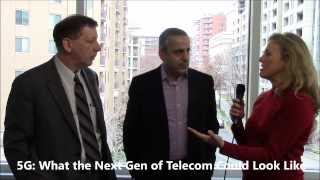“5G” is the catchall title for what scientists, inventors, software developers, universities and a host of companies involved in developing and operating telecom networks are working on as the next generation of infrastructure estimated to arrive on the airwaves circa 2020 and beyond.
The TIA brought together Ericsson, Samsung, Alcatel-Lucent, Virginia Tech, Lemko and other companies to discuss how they envision the next standard of telecommunications developing, and the work currently underway.
The continued growth of video over the Internet, the explosion of machine-to-machine products and services, new industries such as wearable technology, new uses of data such as in augmented reality – all mean that quality of service must be high, access ubiquitous, data rates capable of meeting customer demand, customer price points sustainable and operations costs low enough to allow for data-based profitability.
5G is a conglomeration of concepts including new wave frequency management, software defined networks, network function virtualization and more that together may yield a new, flatter, lower latency and less costly infrastructure. Norman Fekrat, chief strategy and revenue officer at Lemko, and Fran O’Brien, technology director of the wireless standards and intellectual property department at Alcatel-Lucent, discuss their individual perspectives on the approach to 5G and the work their respective companies are doing to establish footholds and define the standards for this new era. O’Brien and Fekrat discuss with Limor Schafman of U2U Connect on RCRTV two key drivers of the 5G mission: Reduction of cost per gigabit of data, and data demand.

